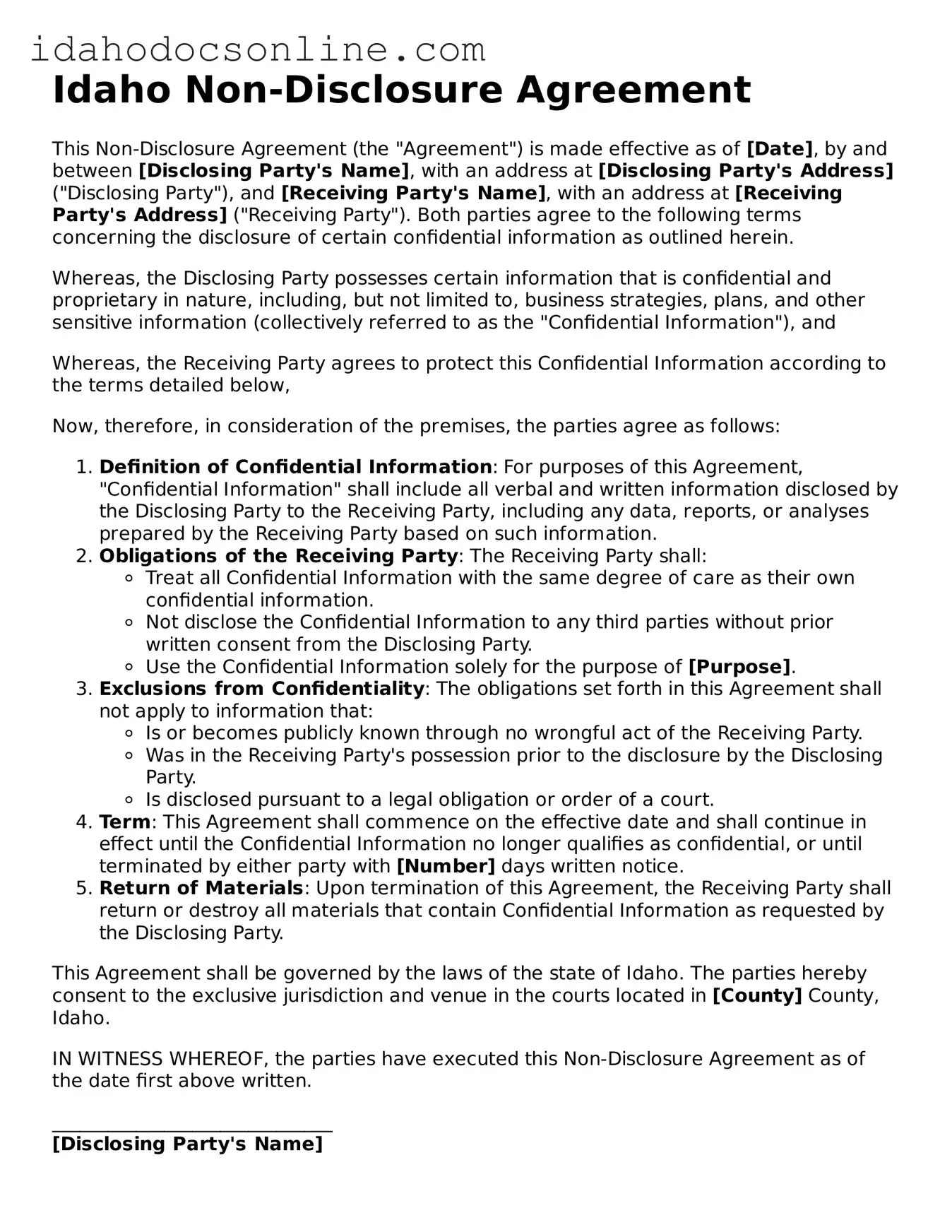Idaho Non-Disclosure Agreement
This Non-Disclosure Agreement (the "Agreement") is made effective as of [Date], by and between [Disclosing Party's Name], with an address at [Disclosing Party's Address] ("Disclosing Party"), and [Receiving Party's Name], with an address at [Receiving Party's Address] ("Receiving Party"). Both parties agree to the following terms concerning the disclosure of certain confidential information as outlined herein.
Whereas, the Disclosing Party possesses certain information that is confidential and proprietary in nature, including, but not limited to, business strategies, plans, and other sensitive information (collectively referred to as the "Confidential Information"), and
Whereas, the Receiving Party agrees to protect this Confidential Information according to the terms detailed below,
Now, therefore, in consideration of the premises, the parties agree as follows:
- Definition of Confidential Information: For purposes of this Agreement, "Confidential Information" shall include all verbal and written information disclosed by the Disclosing Party to the Receiving Party, including any data, reports, or analyses prepared by the Receiving Party based on such information.
- Obligations of the Receiving Party: The Receiving Party shall:
- Treat all Confidential Information with the same degree of care as their own confidential information.
- Not disclose the Confidential Information to any third parties without prior written consent from the Disclosing Party.
- Use the Confidential Information solely for the purpose of [Purpose].
- Exclusions from Confidentiality: The obligations set forth in this Agreement shall not apply to information that:
- Is or becomes publicly known through no wrongful act of the Receiving Party.
- Was in the Receiving Party's possession prior to the disclosure by the Disclosing Party.
- Is disclosed pursuant to a legal obligation or order of a court.
- Term: This Agreement shall commence on the effective date and shall continue in effect until the Confidential Information no longer qualifies as confidential, or until terminated by either party with [Number] days written notice.
- Return of Materials: Upon termination of this Agreement, the Receiving Party shall return or destroy all materials that contain Confidential Information as requested by the Disclosing Party.
This Agreement shall be governed by the laws of the state of Idaho. The parties hereby consent to the exclusive jurisdiction and venue in the courts located in [County] County, Idaho.
IN WITNESS WHEREOF, the parties have executed this Non-Disclosure Agreement as of the date first above written.
______________________________
[Disclosing Party's Name]
______________________________
[Receiving Party's Name]
